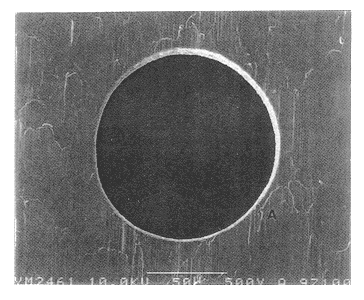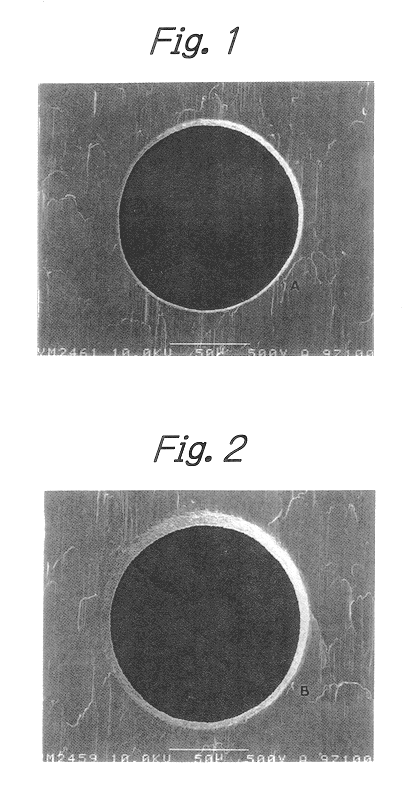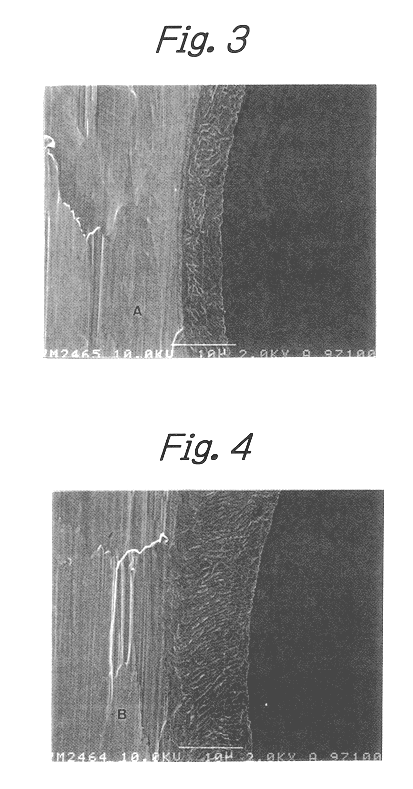Fe-Ni alloy material used for shadow mask having improved formability of through-holes by etching
a technology of alloy materials and through-holes, applied in the field of fe-ni alloy materials, can solve the problems of difficult variation of the diameter of the etched aperture, local etching failure, etc., and achieve the effect of improving the uniformity of eliminating or lessening the diameter of the apertur
- Summary
- Abstract
- Description
- Claims
- Application Information
AI Technical Summary
Benefits of technology
Problems solved by technology
Method used
Image
Examples
examples
The Ni concentration and concentration of impurities (incidental elements) were adjusted to: 35.8-36.5% of Ni, 0.2-0.5% of Mn, 0.02-0.3% of Si, 0.0005-0.005% of S, 0.01-0.3% of Al, 0.001-0.1% of C, 0.001-0.003% of P and 5-40 ppm of B and 5 to 40 ppm of B. The ingot was hot-forged and then hot-rolled. The oxide scale on the surface of the hot-rolled material was then removed. The cold rolling and recrystallizing annealing were then repeated. The final cold-rolling was to reduce the thickness to 0.2 mm. As a result of these steps, an alloy strip was produced. The composition of ingots, melting method and conditions of subsequent cold-rolling as well as the heat treating methods were varied within the embodiments mentioned above, so as to vary the amount of inclusions and precipitates.
Table 1 shows the analysis result of inclusions on the corrosion origins with regard to the materials produced by the following steps 1.about.3. It is estimated that such precipitates as BN and such inclu...
PUM
| Property | Measurement | Unit |
|---|---|---|
| diameter | aaaaa | aaaaa |
| thickness | aaaaa | aaaaa |
| diameter | aaaaa | aaaaa |
Abstract
Description
Claims
Application Information
 Login to View More
Login to View More - R&D Engineer
- R&D Manager
- IP Professional
- Industry Leading Data Capabilities
- Powerful AI technology
- Patent DNA Extraction
Browse by: Latest US Patents, China's latest patents, Technical Efficacy Thesaurus, Application Domain, Technology Topic, Popular Technical Reports.
© 2024 PatSnap. All rights reserved.Legal|Privacy policy|Modern Slavery Act Transparency Statement|Sitemap|About US| Contact US: help@patsnap.com










